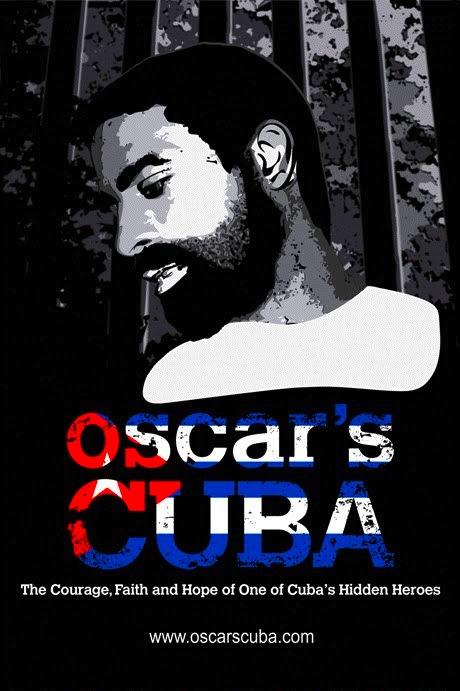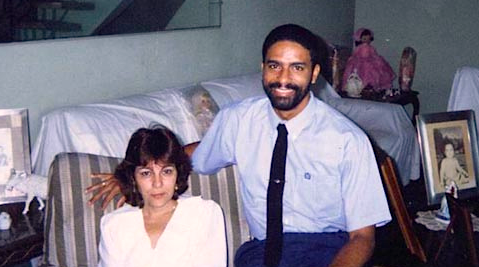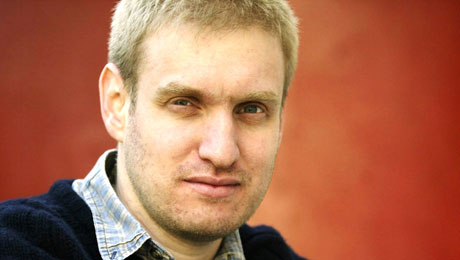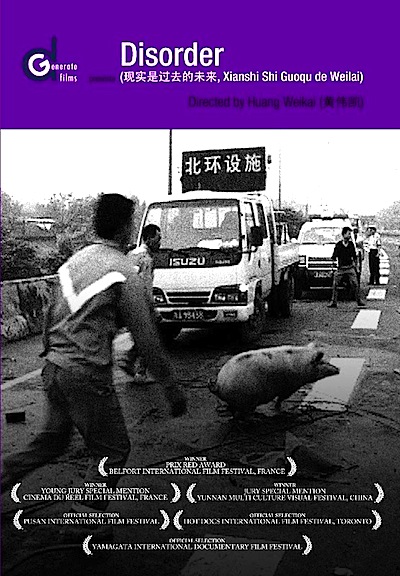By Joe Bendel. Initially, the student-driven revolution against Czechoslovakia’s hardline Communist government seemed hopelessly naïve. In a mere eleven days, the humbled regime relinquished their dubious claim to power, clearing the way for democratic elections. Unlike the current Middle Eastern “Days of Rage,” it all transpired without demonstrators committing any sexually, ethnically, or religiously motivated acts of violence. In fact, whether Havel and the Velvet Revolution were too forgiving of their former oppressors is one of the questions raised in Cory Taylor’s documentary, The Power of the Powerless, which opens this Friday in the Los Angeles area. Continue reading What a Revolution Should Look Like: The Power of the Powerless
Category: Documentary
The Sartorialist: Feeding the Visual Sense
By Govindini Murty. In honor of Fashion Month, I thought it would be fun to introduce Libertas readers to one of my favorite fashion/street-photography sites, The Sartorialist. Founded in 2005 by Scott Schuman, The Sartorialist is one of the most visually-inspiring sites out there. Schuman has been doing an exceptional job recently covering the New York, London, Milan, and Paris fashion shows. I’ve included a favorite look he captured from the Gucci show here, and other striking shows he’s covered include the Marc Jacobs show and the Altuzarra show in New York. Back in January Schuman also covered the men’s collections in Florence (where Luca Rubinacci epitomized the Italian style) and Milan, where the most elegant presentation was the Bottega Veneta show.
Of course, Schuman covers a lot more than runway shows – his main talent is as a street-style photographer – but we’ll get to that in a moment.

Jason and I often speak about the importance of feeding the visual sense. As filmmakers and creative people, it’s extremely important to think about the image as much as about words, dialogue, and ideological meaning. That is why we here at Libertas make the effort to provide you with a site that is as appealing to look at as it is thought-provoking to read.
I found out about The Sartorialist about a year and a half ago from an article in British Vogue. Scott Schuman started the site in 2005 by posting photos he had taken of the quirky and chic people he encountered on the streets of Manhattan. The Sartorialist attracted more and more admirers, including many fashion industry professionals who turned to the site to see what was happening on the street-level in fashion. Within just a few years Schuman has become a fashion force to be reckoned with. The Sartorialist now receives more than two million unique visitors a month and Schuman’s photos are on the inspiration boards of major fashion houses around the world. Schuman has also been named one of Time Magazine’s Top 100 Design Influencers and he has been profiled in numerous fashion magazines and newspapers (read an LA Times profile here and an article in The London Times). In 2009 Schuman also published a terrific book of his street-style photography. Continue reading The Sartorialist: Feeding the Visual Sense
Prisoner of Conscience Under Castro: Oscar’s Cuba
By Joe Bendel. It is not hard to see why the Castro brothers fear Dr. Oscar Elías Biscet. A medical doctor with commanding leading man looks, Dr. Biscet has been a selfless and tireless champion of human rights in Cuba. In short, he is everything they are not, which would make him a formidable political rival if Cuba were a free democracy.
Of course, this is not the case. Imprisoned for years, usually in solitary confinement, Dr. Biscet has become a unifying symbol of hope and non-violent resistance throughout the island gulag, as filmmaker Jordan Allott documents in Oscar’s Cuba, a selection of the 2011 John Paul II Film Festival, which has a special screening this coming Wednesday in Las Vegas at the Clark County Library Theatre.
 When allowed her brief bi-monthly visit, Dr. Biscet’s wife Elsa Morejon always brings him toilet paper, because his Communist captors refuse to supply such everyday staples necessary for basic human dignity. This ritual encapsulates the essence of the Cuban police state. However, it has not broken Dr. Biscet’s spirit according to those who have met him in prison. No stranger to Castro’s dungeons, thirty-six days after serving a three year prison sentence, Biscet was swept up again in the notorious 2003 Black Spring round-up of seventy-five Cuban dissidents. To this day, he remains in a dark, confined, unsanitary cell.
When allowed her brief bi-monthly visit, Dr. Biscet’s wife Elsa Morejon always brings him toilet paper, because his Communist captors refuse to supply such everyday staples necessary for basic human dignity. This ritual encapsulates the essence of the Cuban police state. However, it has not broken Dr. Biscet’s spirit according to those who have met him in prison. No stranger to Castro’s dungeons, thirty-six days after serving a three year prison sentence, Biscet was swept up again in the notorious 2003 Black Spring round-up of seventy-five Cuban dissidents. To this day, he remains in a dark, confined, unsanitary cell.
Born shortly after the unsuccessful Bay of Pigs invasion, Biscet has lived his entire life under Castro’s regime. Yet, the dissident doctor has always maintained a profound Christian faith. In fact, much of the pro-life Biscet’s activism began in protest of the Communist government’s policies of forced abortions – and even infanticide – of premature newborns to bolster their internationally vaunted infant mortality statistics. He would become Cuba’s leading advocate of democratic reform and a proponent of non-violence, often referencing the works of Martin Luther King, Jr. and Henry David Thoreau.
Though not able to talk to the man himself (for obvious reasons), Allott interviews many of Biscet’s former prison-mates and fellow human rights activists, without the sanction or supervision of the Cuban regime. We also hear from former Cuban political prisoner and U.S. Ambassador (to the UN Commission on Human Rights) Armando Valladares, a figure well worthy of his own documentary.

While clearly produced to spur grassroots activism, Allott still earns props for his on-the-spot undercover reporting, capturing first-hand the unsavory realities of Cuban life, like Castro’s thuggish flash-mobs sent to intimidate dissidents and their families. Jazz and Afro-Cuban music lovers will also appreciate the original score composed by bandleader-defector Arturo Sandoval, Dizzy Gillespie’s close collaborator and heir as the king of the trumpet’s uppermost registers.
Far too much of Oscar’s Cuba will come as a revelation to general audiences who rely on the absentee media for international news. Highly informative, but also an inspiring portrait of one man’s faith, courage, and dignity in the face of oppression, Oscar’s Cuba was a truly fitting selection for the JP2FF. Recommended along with a prayer for Dr. Biscet and his colleagues, Oscar’s Cuba screens this coming Wednesday (3/2) in Vegas.
Posted on February 25th, 2011 at 4:37pm.
Even Better than James Franco & Anne Hathaway: Ronald Reagan & Jayne Mansfield
By Jason Apuzzo. My favorite part of this video? The way Mansfield tosses away the envelope.
Enjoy the Oscars this weekend, assuming you consider that possible.
Posted on February 25th, 2011 at 4:30pm.
Ido Haar in San Francisco: Melting Siberia
By Joe Bendel. Ido Haar’s road to San Francisco ran from Israel through Novosibirsk. Chosen as the inaugural filmmaker to launch the San Francisco Film Society’s Artist-in-Residence program, the still youthful looking Haar has already established an international reputation. At one point an editor for BeTipul, the Israeli series on which the HBO series In-Treatment is based (often word-for-word), Haar is probably best known on the festival circuit for the naturalistic, issue-driven documentary 9 Star Hotel. In contrast, his first non-fiction feature was the distinctly personal Melting Siberia, which screens next Wednesday as part of two weeks of programming related to his residency.

Given its uniquely tragic history, many grieving spouses and children immigrated to Israel without parents and loved ones. Such was the case with Haar’s mother and grandmother, but his grandfather was very much alive. A Soviet Red Army officer stationed in Latvia, Marina’s father abandoned her and her mother shortly after the war. Always understandably resentful, Haar’s mother never sought out the father she never knew. However, when Haar tracks down his grandfather in frozen Novosibirsk, Marina reluctantly but resolutely follows-up in a series of phone calls, letters, and finally a fateful visit – all faithfully documented by Haar.
Deliberately modest and intimate, Melting is true to life, capturing the messy conflicting emotions and social awkwardness of Haar’s family reunion, finding closure where it can. Clearly a strong woman, Haar’s mother emerges as the star, tough but vulnerable all the way through. Yet even on his supposed best behavior, his grandfather remains a deeply problematic figure. Before their eventual meeting, Marina muses whether deserting one’s family was conduct becoming a Soviet officer. It is a fair question, perhaps even more so following a devastating confrontation between a father and daughter still strangers to each other.
Unlike Haar’s other works, he frequently appears in Melting, good naturedly taking his family ribbing.It augurs well for his stint in-residence at SFFS (2/21-3/5), especially his classroom visits and master class scheduled for this Saturday (2/26). Haar will also be in-attendance for a special screening of Melting next Wednesday (3/2) at New People Cinema in San Francisco. Unblinkingly honest, it is a quietly moving film, well worth seeing at any time.
Posted on February 23rd, 2011 at 5:30pm.
Subversive Chinese Cinema: LFM Reviews Disorder @ MoMA
By Joe Bendel. Word to the wise, take care crossing the streets of Guangzhou and the surrounding suburbs. If you are hit by a car, the driver might just try to stuff some cash in your pocket and toss you out of the way. For their part, the police appear woefully inadequate at managing accidents. It is all rather messy and unfortunate, but it’s easy to understand how such episodes caught the attention of scores of Chinese digital video enthusiasts, whose most “youtube-able” footage has been edited together in Huang Weikai’s collage-like Disorder, which screens during the 2011 Documentary Fortnight now underway at MoMA.
 China has a reputation for being a tightly regulated society, perhaps tragically so. However, the amateur video assembled by editor-director (emphasis on editor) Huang paints a more anarchic picture. At times, it is somewhat amusing. The face of a restaurant customer finding a roach in his ramen is pure movie gold. Indeed, there are plenty of “you-don’t-see-that-everyday” moments in Disorder, as when a group of men try to corral a pack of panicky pigs on the highway – while the cops watch disinterestedly. They do that quite frequently in Disorder.
China has a reputation for being a tightly regulated society, perhaps tragically so. However, the amateur video assembled by editor-director (emphasis on editor) Huang paints a more anarchic picture. At times, it is somewhat amusing. The face of a restaurant customer finding a roach in his ramen is pure movie gold. Indeed, there are plenty of “you-don’t-see-that-everyday” moments in Disorder, as when a group of men try to corral a pack of panicky pigs on the highway – while the cops watch disinterestedly. They do that quite frequently in Disorder.
However, Disorder is not all light-hearted corruption and incompetence. There is real tragedy as well. Frankly, Huang somewhat downplays the most shocking incident, most likely a by-product of China’s strict one-child policy. Still, his concluding sequences logically have the most political bite, capturing full-scale police brutality in an incident that teeters on the brink of a legitimate riot.
They might be so-called amateurs, but the videographers who recorded these scenes deserve considerable credit for standing their ground and getting their shots. In his editorial judgment, Huang demonstrates a shrewd eye for visuals and a subversive sensibility. Whether he intended to or not, he conveys a sense of the anger and frustration bubbling beneath the surface of many average citizens. Yet they never seem to release it in a coordinated, efficacious manner, as the audience witnesses in graphic terms.
At just about an hour’s running time, Disorder is a particularly manageable dose of the Digital Generation-style of independent Chinese filmmaking, appropriately distributed by dGenerate Films, the Chinese indie specialists. Short but sometimes shocking, it is a strong selection for this year’s Documentary Fortnight. It screens again tomorrow (2/20) as the annual doc festival continues at MoMA, and it might be a ticket in high demand. There were a few technical glitches at last night’s screening (ultimately resolved well enough), so some of the near capacity audience might be back for the second go-round.
Posted on February 19th, 2011 at 2:05pm.